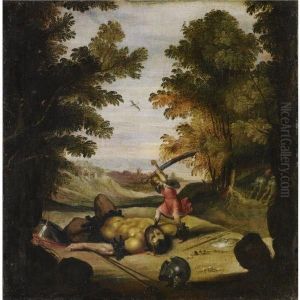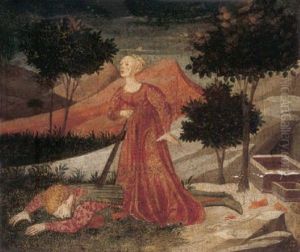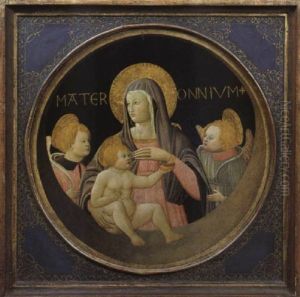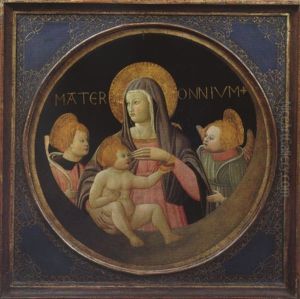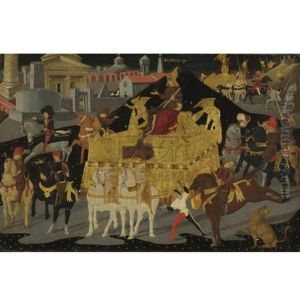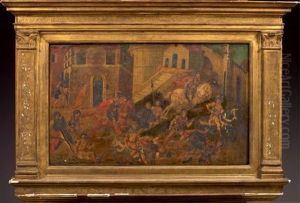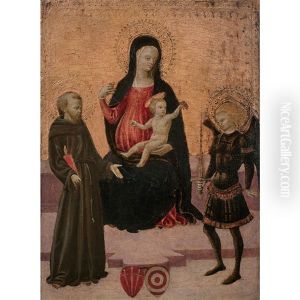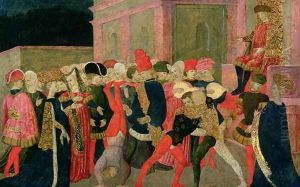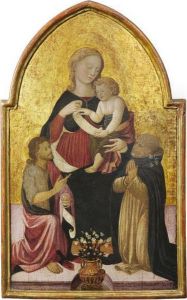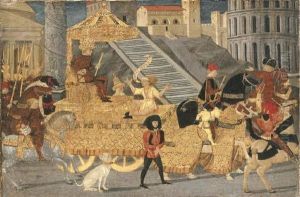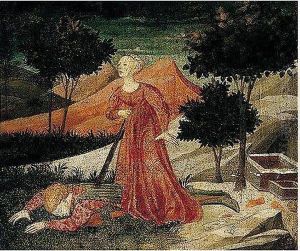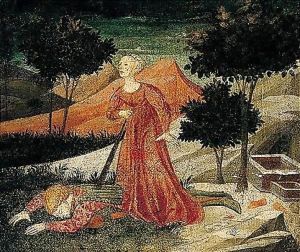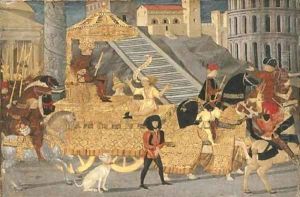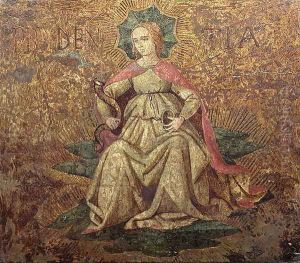Apollonio di Giovanni Paintings
Apollonio di Giovanni di Tomaso, born in either 1415 or 1416 in Florence, Italy, was an eminent Italian painter of the early Renaissance period. His work primarily focused on historical and mythological narratives, often executed with meticulous detail and vibrant colors, which reflected the innovative spirit of Florentine art during this era. Apollonio's contributions to the art world were not solely confined to his paintings; he was also renowned for his cassone panels, which were ornately decorated chests typically commissioned for marriages and were considered a significant aspect of domestic furnishings in Renaissance Florence.
Apollonio's training and early influences remain somewhat obscure, but it is evident that he was deeply immersed in the artistic environment of Florence, which at the time was flourishing under the patronage of the Medici family and other prominent figures. By the mid-15th century, Apollonio had established a successful workshop with another artist, Marco del Buono Giamberti. Together, they produced a remarkable volume of work, including altarpieces, frescoes, and especially cassone panels, which depicted scenes from classical antiquity and contemporary literature, appealing to the erudite tastes of Florentine society.
The collaboration between Apollonio and Marco was notably synergistic, allowing them to undertake larger commissions and projects. Their workshop became one of the most sought-after in Florence, catering to the demands of wealthy clients who sought to embellish their homes with luxurious and educational artwork. Despite the partnership's success, much of the work produced has been attributed to the workshop rather than to individual artists, making the precise contribution of Apollonio sometimes difficult to ascertain.
Apollonio's style is characterized by its narrative clarity and the vivid portrayal of figures within well-composed landscapes or architectural settings. His work exhibits the early Renaissance fascination with perspective and the human form, drawing inspiration from classical sources while integrating contemporary Florentine artistic developments. Unfortunately, much of his work has not survived or has been dispersed in private collections, making a comprehensive assessment of his oeuvre challenging.
Apollonio di Giovanni died in 1465 in Florence. Although not as widely recognized today as some of his contemporaries, his contributions to Renaissance art, particularly in the realm of secular and domestic decoration, remain significant. His legacy is preserved in several major museums around the world, where his panels continue to captivate audiences with their intricate details and historical narratives.
